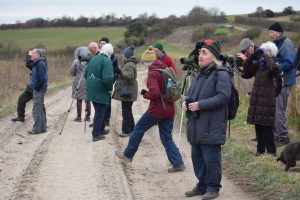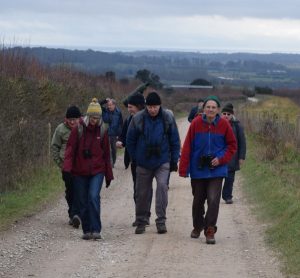Members of Ferring Conservation Group welcomed Matt Eade to their February meeting to talk about his observations regarding bird migration here in Sussex. Matt has had a lifelong interest in birds and in his professional life he works in operations at Naturetrek HQ and has the responsibility to design and lead wildlife tours.
Matt strongly recommends autumn as the best season to watch birds migrate along the Sussex coastline, when thousands of birds flock through just stopping long enough to refuel before crossing the English Channel.
Although wetlands, heathlands, estuaries and peatlands hold international importance for so many migratory species all year round, the best chance of seeing a variety of birds is around coastal nature reserves.
A south-east wind is favourable in observing a mixed group of migrating birds and will not only attract a good selection of passage migrants but also draw in some rarities.
The scenic valley of Cuckmere Haven – the gateway to the Seven Sisters, is also a fantastic location where passerines use stars and landmarks to navigate. Birds use the rotation of close star patterns around a centre point, and in the wild this enables them to determine where north is and then use this information to fly south.
Matt explained to the audience that Raptors usually preferred to avoid flapping flight so their flyways are generally over land.
Illustrated with excellent photographs, Matt reported that the following birds had been sighted by him in recent years:
Red-breasted Goose, Osprey, Honey-buzzard, Aquatic Warbler, Tawny Pipit, and Short-eared Owls.
After the usual break for refreshments Graham Tuppen took to the floor to present the Nature Notes slot. Graham reported many interesting sightings along the Rife including a Kingfisher, a Water vole, Frog Spawn in both lagoons, Stock Doves, Collared Doves and Great-crested Grebes on the beach. Graham also reported that the Nature Walk around Burpham on Monday had been well attended and among many interesting observations were numerous birds of prey along with welcome signs of spring such as primroses, snowdrops and hawthorn coming into leaf – a keen member also spotted two Hares ‘Boxing’ in the middle of a field.
Ed Miller brought the meeting to a close with Planning News:
The proposed housing estate at Kingston Lane is soon to be decided along with the proposed Lansdowne Nursery estate.
The proposed Ham Manor housing estate is still open for comment as well as the proposed Highdown Vineyard estate.
Ed reminded members that the Government is soon to change the policy on housing development under the ‘Planning Policy Framework’ – which he feels cannot be implemented soon enough.


